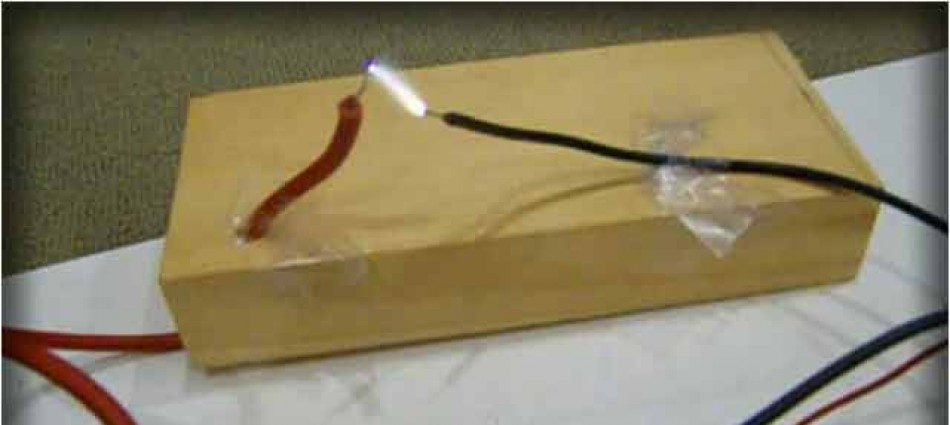
Well today’s the day! On the eve of Canada day I have made a giant step towards a good version of the plasma speaker! After letting the magic smoke out of countless ICs and Diodes I have finally put together a working model of the plasma speaker. The first thing I did to guide me on my path was to find a TL494 IC in a dip format. I figured that it was going to be another month until I could make this post as I would have had to special order a TL494 chip online which would cost me shipping and a whole crap more money than the chip was worth. When out of the blue two days ago my father asked me what chip I needed for the Plasma speaker. Having studied the schematic for hours I could quote almost every component off by heart at this point, so I told him “TL494″ he looked at me, let out a little chuckle and a smirk, and pointed over to the other side of the kitchen. I walked over and saw several power tools and construction materials (we’re in the middle of a kitchen reno) and an old pc power supply. I picked it up and said “is this it?”. “Yes” he answered “I pulled it out of the pc that that my work threw out. The power supply was the only thing that was bad in it.”. So earlier on today (yesterday?) I open her up and lo and behold there is a TL494 DIP IC staring me in the face (Nestled right beside a LM339N I might add) as well as several other things I may need in the future of this speaker (toroids, heatsinks, etc…).
After about 20 minutes of trying to get this chip out with a solder sucker and solder braid, I finally succeed. I pop it into my breadboard (which had the starting of my time fountain, but who cares PLASMA SPEAKER!) and begin wiring up the schematic. Everything looks wired up properly and I have a speaker in place of the flyback transformer (another steal from the discarded television that I got the flyback from). I attach a 9V battery and…. nothing happens…. shit ok well time to pull out the big guns… the 12V motorcycle battery. I attach the battery and…. it kinda works… except the speaker is just puffed out all the way…. it’s not making any noise at all! What should be happening is the speaker should be oscillating at some high frequency but it’s not, it’s just sitting there all puffed out…. At around this time my father gets home from work. I have a question for him. The TL494 chip has a black dot on it (which usually denotes where pin 1 is) as well as a notch in it (Another common way to denote pin 1) on the opposite side. Theres your problem. the chip is in backwards! I reverse the chip and TA-DA a squealing speaker!
Now it was time to attach the flyback transformer and get to the sparky sparky, singy singy. I put it all together and PFFFFFTTTT! all the magic smoke flys out of my diode. At this point I have let the magic smoke out of so many ICs and Diodes my nickname should be John the wizard. I go back to the drawing board and my dad points out to me that diodes (unlike capacitors) have a white line marking their cathode (whereas on capacitors it denotes an anode). Well shit! I must have blown this diode 20 times because that stupid quirk of electronics. I put my last diode in, turn on the power and….. LIGHTING! It verks! for the next 20 minutes I walk around the house with a big shit eating grin on my face looking for some sort of CD, Cassette, or shitty MP3 player to plug into this potential device killer to make me some audio. I finally find an old Mp3 player that I found on the bus in grade 6 and hook it up (the MP3 player needed a non-standard usb cable so I had to settle with what was on it…. Dr.Dre lol) after about 20 sec0nds of it working…. PFFFTTT! magic smoke billows from the IRF540 MOSFET. So I take a look at it… the heatsink isn’t hot!? I put some heatsink compound on the back whats the deal!? Well it turns out there was a sheet of mylar between the heatsink and the original component and it wasn’t very efficient. So I pop off the mylar sheet, clean everything up, add some new heatsink compound and a new MOSFET and there we go… it works for a longer period of time and I am able to bring you the following video.
It has been brought to my attention that I neglected to cite the source of this schematic. I built this setup by following plasmana’s instructable. I will be making another, more powerful plasma speaker based off another design.